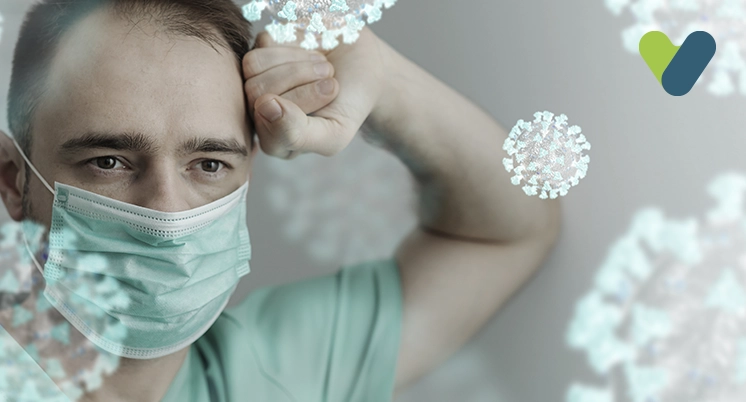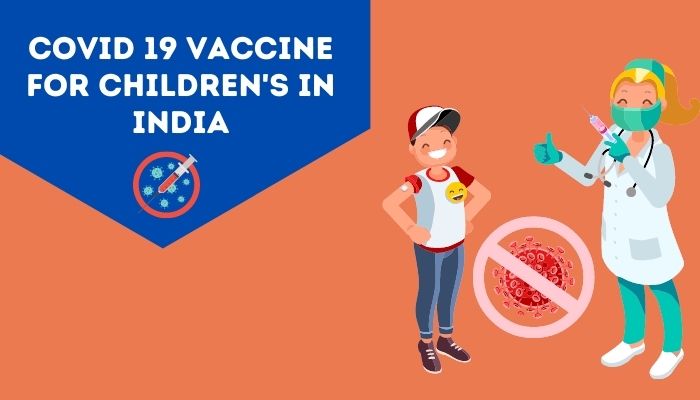Coronavirus has taken over everyone’s lives, putting everything on hold. Every country has developed a different experience with COVID-19. Some still remain under lockdown protocols to minimize spread, while others never put up lockdowns in the first place, some are devastated by the high number of losses, and some have moved on to the next phase of ‘the new normal’. Scientists believe that COVID-19 will end up becoming an endemic disease, meaning that it will stay within the global population in low numbers and severity. Hence it becomes the people’s responsibility to stay cautious and take up vaccinations and bet on their own safety.
Understanding Coronavirus
‘Corona’ denotes a family of viruses that cause respiratory ailments and infections in humans. The COVID-19 virus, a member of the Coronaviruses, is one of the latest strains reported for the first time in Wuhan, China, in December 2019. It has now spread across the globe, capturing new titles for its spread, from epidemic to pandemic to endemic. It is highly contagious and prone to mutation. The mortality rate for most viral infections is 1%. But WHO has announced that the global mortality rate has been at 3%, assuming data from the reported cases and the reported deaths.How The Virus Spreads
The COVID-19 virus spreads through droplets issued from the infected person. It gets transmitted through the respiratory system. There are two main ways the spread the coronavirus.- Direct inhalation – The droplets of phlegm/sputum emitted from an infected person during coughing, sneezing, and even breathing can remain as suspended particles in the air for durations lasting from minutes to hours. Healthy individuals inhale these suspended particles, giving the virus easy access to their respiratory system where it develops, and that is how coronavirus spreads from one host to several more.
- Touching – the virus tends to settle on inanimate objects and can survive without a host for almost 72 hours. Touching objects that might have the virus, the same hand coming in contact with the face, nose, ears, or mouth can provide an opportunity for the virus to reach the respiratory tract.
Preventive Measures To Avoid COVID-19
In addition to the protocols that the government has imposed in all public spaces, every individual can take steps to prevent COVID-19 spread. Here are some preliminary steps to protect yourself from COVID-19:COVID-19 Prevention At Home –
The basic steps to take for keeping your house a corona-free zone is to maintain habits of hygiene whenever you enter the house and clean and disinfect your house regularly.
- Make sure to use hand sanitizers and hand washes frequently
- Use alcohol-based sanitizers and disinfectants once you enter the house.
- Always take a bath as soon as you enter the house before touching or interacting with anyone.
- Wash clothes with warm water to get rid of possible viral accumulations.
- Get air purifiers and provide sufficient ventilation.
- Cleaning and disinfecting high-touch surfaces like switchboards, doorknobs, and tables.
- Only allow people who have been vaccinated to enter the house
- Isolate family members who are affected with COVID-19
- Self-isolate if you find symptoms
- Avoid social gatherings
- Wear gloves when handling utensils and things used by infected family members.
Precautions of COVID-19
It is impossible to stay confined at home. Whenever you do go out, be sure to abide by the following COVID-19 precautions:- Always wear a mask and gloves when going out.
- Avoid unnecessary touching of things.
- Carry hand sanitizers and disinfectant sprays.
- Say clear of crowds and maintain social distancing.
- Stay at home if you feel unwell.
- Get vaccinated.
Diagnosis of COVID-19
If you experience any of the following symptoms, it is suggested to get diagnosed with COVID-19. Detecting the infection in the earlier stages helps give a better chance for a smooth and safe recovery. COVID-19 symptoms are not very consistent, varying depending on the intensity of infection and the resistance of the host. The symptoms can take from 5 to 14 days to become noticeable, while some cases are asymptomatic. Some of the common symptoms to identify COVID-19 infection are as follows:- Loss of taste and smell senses – this is the most characterized symptom and a clear indicator of the virus
- Fatigue
- Recurrent cough
- Difficulty breathing
- High fever
- Headache
- Irritation of eyes
- Sore throat
What To Do If Infected With COVID-19?
Upon confirmation of COVID-19 infection, the COVID-19 recovery and treatment process begins. Depending on the severity of the infection, the doctor suggests possible COVID-19 treatment procedures. Since hospitals were overcrowded during several instances of the pandemic, doctors recommended home treatment for COVID-19 for patients with quicker recovery rates and lesser deadly symptoms. Upon receiving the doctor’s recommended treatment norms, you can proceed to either get admitted or treat yourself at home. Here are some possible methods of home treatment for COVID-19:- Isolation – the first step is to contain the virus within one room. Isolate the patient and leave food and other supplies at the door. Keep their rooms well-ventilated.
- Hydration – it is important to support your body’s recovery by providing sufficient fluids. Keep drinking boiled water at a warm temperature. Avoid all alcoholic beverages as they dehydrate the body.
- Rest – there is not much to do but allow your body to build its immunity against the virus. The fever can be tiring, so do not strain your body in additional ways. Even after the subsidization of fever, remain well-rested for at least 2 weeks.
- Steam inhalation – take up steam inhalation sessions every hour to subside the viral infection. Use home remedies and herbs like turmeric, garlic, pepper, ginger, cinnamon, eucalyptus essence, essential oils, and other natural components that have anti-microbial properties.
- Salt-water gargling – periodically gargle with salt water to rid further incubation of the virus. Make your body unideal for the virus’s development.
- Food and beverages – Take huge quantities of ginger tea and warm herbal-infused beverages. Try to have easily digestible foodstuff, preferably in semi-liquid forms. Try not to skip too many meals. Have at least two wholesome meals.
- Yoga and breathing exercises – there are several breathing exercises that the doctor will suggest to follow up in the later stages of your recovery.
- Symptom documentation – have someone observe and note down your symptoms, body temperature, and breathing periodically to submit to the doctor. Check in with a doctor if there are any changes in the patient. Report with details on their improvement and seek doctor’s support through the process. If there are any signs of pale skin, blue lips, an inability to stay awake, chest pain or constrictions, fainting, etc., take the patient to a doctor immediately. If you possess a pulse-oximeter, check up on the patient’s oxygen levels.


